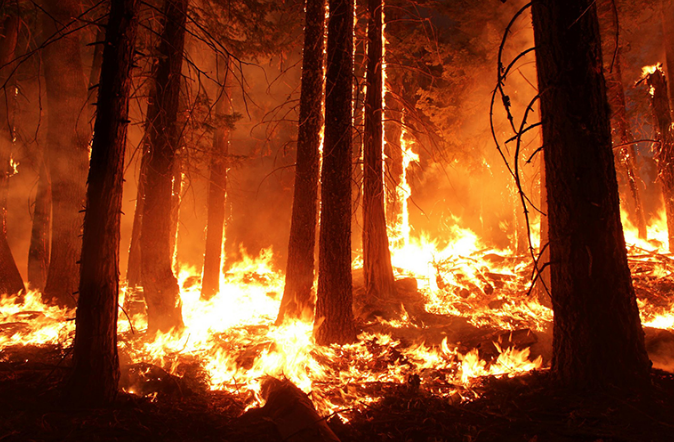2020 and Climate Change
Mike McMillan (via NASA Climate)
Wildfires spread throughout the west coast of the United States spreading due to massive droughts.
2020 is a year for the history books and there is no surprise that it didn’t let up on climate change.
Natural events driven by rising global temperatures including wildfires and hurricanes have been at all-time high frequencies since the beginning of 2020.
The Australian wildfires that followed through May of 2020 destroyed 17 million hectares of land according to the Australian government. This is the worst in Australian history. The overall climate temperature of Australia has risen 1.8 degrees Fahrenheit since 1910 and even though that doesn’t sound like a lot, it’s a major factor in why the fires spread so widely. Places that have continuous droughts are seeing the dry season increase, this leads to drier grounds and the perfect fuel for fires to spread.
However, this just didn’t affect just the Australian continent. The west coast of the United States was devastated by fires for at least 5 months while the world was in lockdown because of the coronavirus. The Arctic, Siberia, Indonesia, Brazil, and Argentina also saw the worst wildfires in at least a decade. There were 33 (people) deaths in the California fires and the Australian fires at least killed three million animals.
The largest wetland on Earth also became a victim to the infernos of 2020. Only a quarter of the wetlands were affected directly.
Wildfires are a normal part of the forest and wetland cycle; They are used to create more space for new plants to grow and also nourish the ground especially with carbon however all these places have almost never seen fires at this level.
The fires exasperated the increase in global temperatures as well which caused sea levels to rise and glaciers to evaporate. This led to a particularly aggressive hurricane season, especially for the US. The Atlantic season alone had 31 tropical cyclones and all but one were serious enough to be named. Six of these made landfalls and about $37 billion in damage.
It doesn’t stop there. A combination of the excess amounts of water and extremely dry land created massive floods. The most notable being the floods in Vietnam that killed over 100 people.
I honestly don’t even want to get in-depth about glaciers melting but you probably get the gist by now. 2020 was not a good year however I hate to leave on such a negative note.
Since everyone wasn’t allowed outside the world got to heal in the smallest but also pretty cool ways. The canals of Venice, Italy became crystal clear without all the traffic running through them. There was an improvement to the air quality in China for about a month in January 2020 by 10.8 percent. The largest hole in the ozone layer above the Arctic closed on January 6, 2020. Endangered animals including elephants and gorillas saw baby booms in their natural habitats. Renewables are also becoming more popular indicating less waste and fewer carbon emissions in the coming years.

Aloha, my name is Sabrina and this is my first year here at The Tribe. The past three years I've considered Santaluces my second home. I'm a current member...











